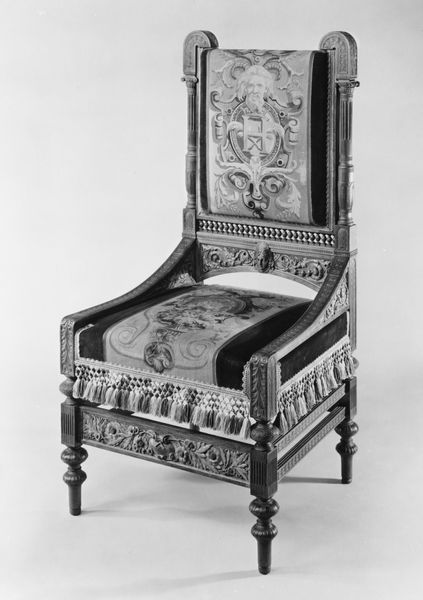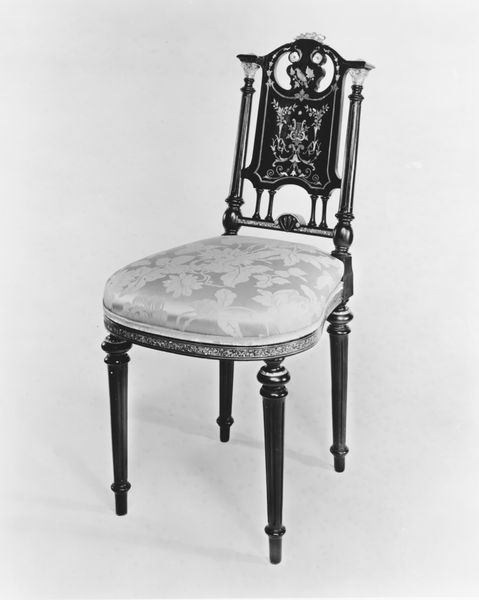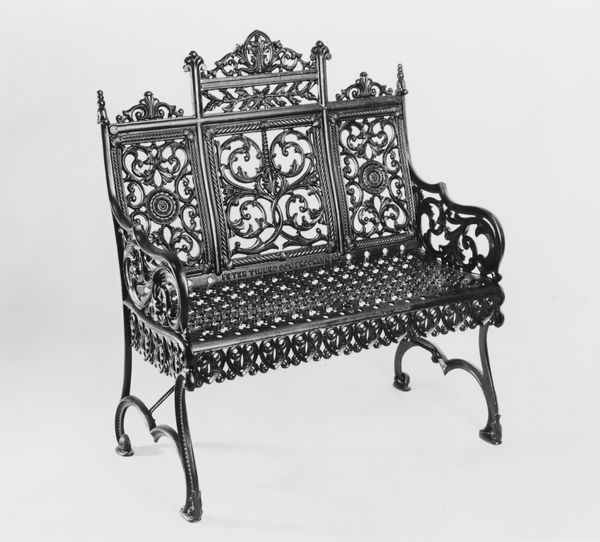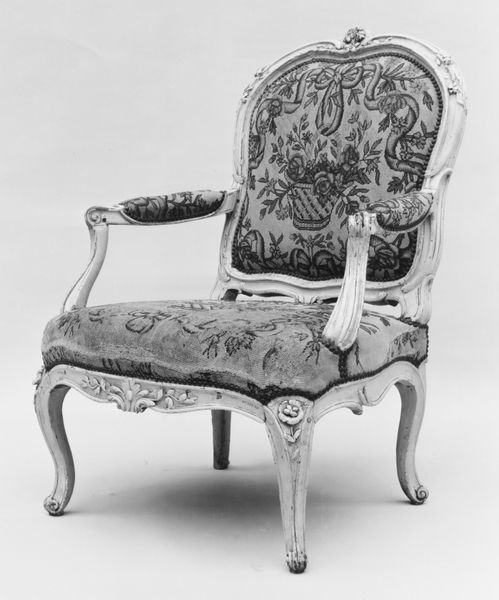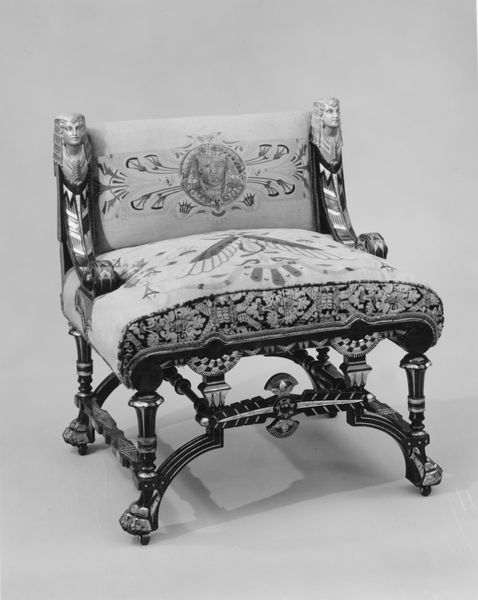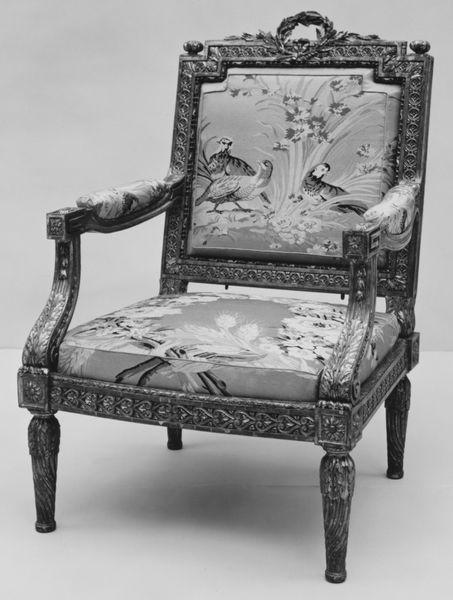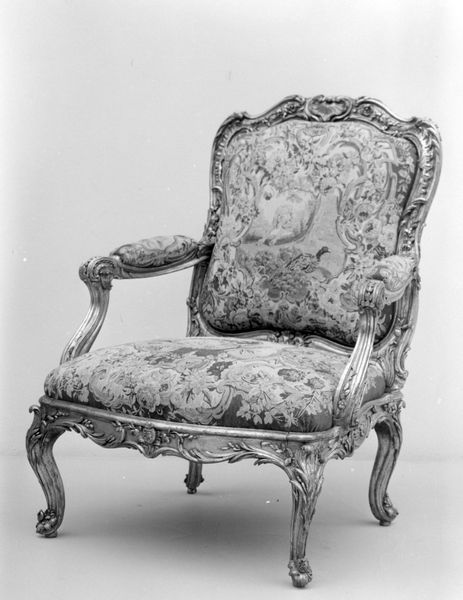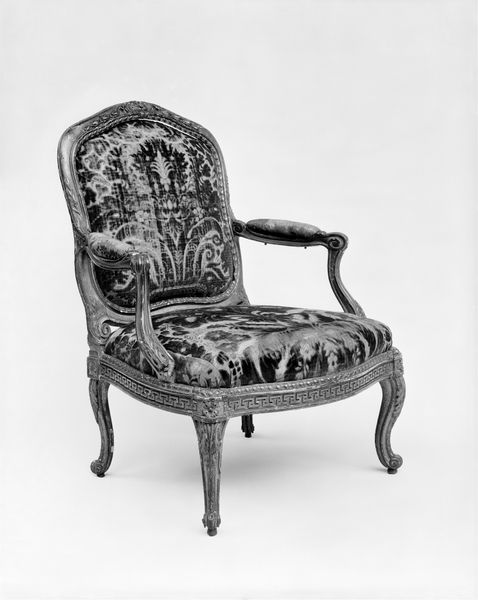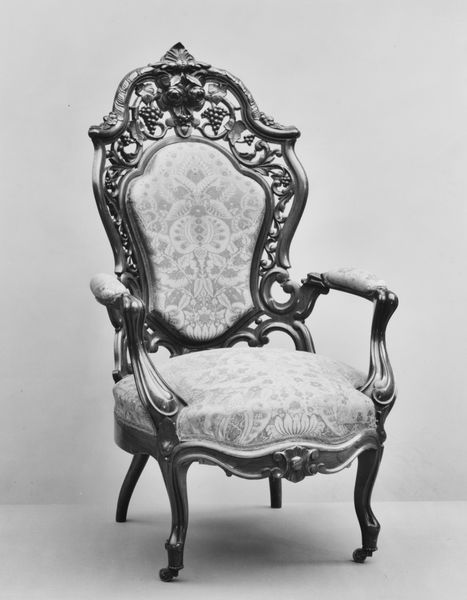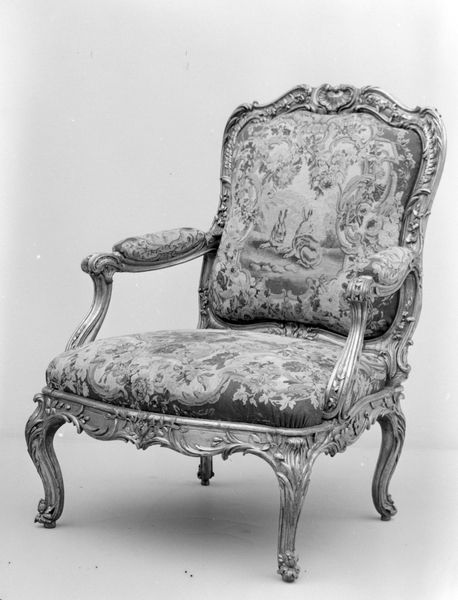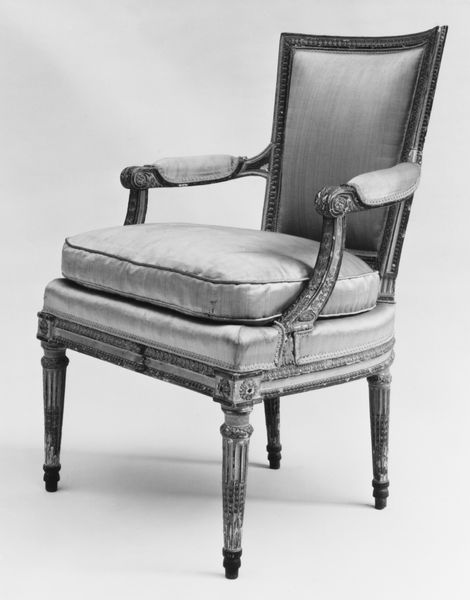
metal, sculpture
#
metal
#
sculpture
#
form
#
geometric
#
sculpture
#
decorative-art
Dimensions: 35 1/4 x 21 x 19 in. (89.5 x 53.3 x 48.3 cm)
Copyright: Public Domain
Editor: So, here we have "Armchair" made sometime between 1877 and 1897 by the North American Iron Works. It's currently located at The Met. It’s fascinating! I’m immediately struck by its intricate, almost lace-like metalwork. It's so delicate yet rigid. How should we interpret an object like this? Curator: Well, considering the historical context is key. The late 19th century witnessed a boom in industrial production and conspicuous consumption. Cast iron furniture became a signifier of bourgeois taste and accessible luxury, didn’t it? What message does presenting such mass production as high art communicate, would you say? Editor: Hmmm... It makes me wonder if there’s commentary here on the role of art. Mass produced, yet presented and treated as art, challenging the distinction between art and design, blurring the lines, maybe? Curator: Exactly. Iron foundries aimed to democratize beauty through serial reproduction. Were they actually trying to compete with traditional handmade crafts, or just offering a cheaper version to middle classes, without questioning traditional crafts themselves? How did artisans and designers adapt or react to this challenge from industrial production? Editor: Interesting question! Maybe it drove artisans to focus more on unique, high-end pieces? Sort of doubled down on exclusivity? Curator: Precisely! Now, consider the role of institutions like the Met in exhibiting such items. Are they simply documenting material culture or are they conferring artistic status by placing it on a pedestal? What does that action say about society’s evolving values around design and craftsmanship? Editor: That's really thought-provoking. I had considered the art itself but not the art world apparatus presenting the art. Curator: Right, and the very fact that it sits in a museum shifts its function entirely, doesn’t it? From functional object to a symbol of a specific historical moment and its complicated relationship with industrialization and art. Editor: Thanks, that gave me a lot to consider about context, presentation, and industrial production! I see this piece in a completely new light now.
Comments
No comments
Be the first to comment and join the conversation on the ultimate creative platform.
